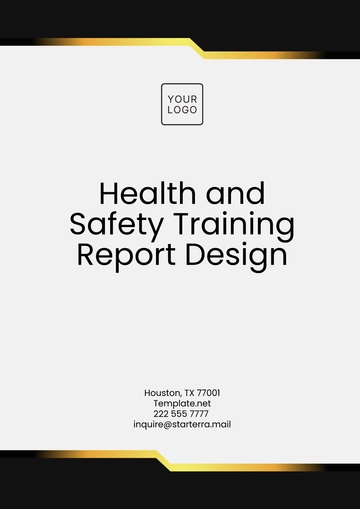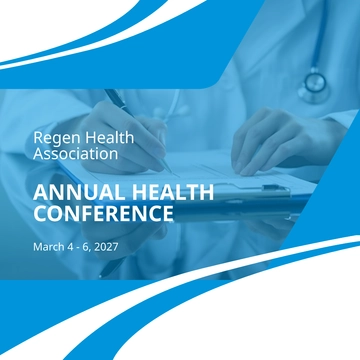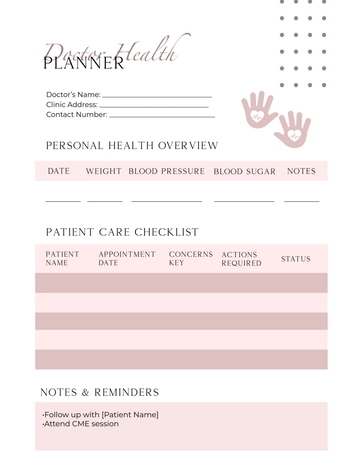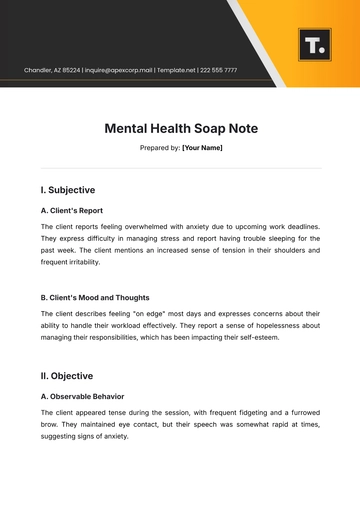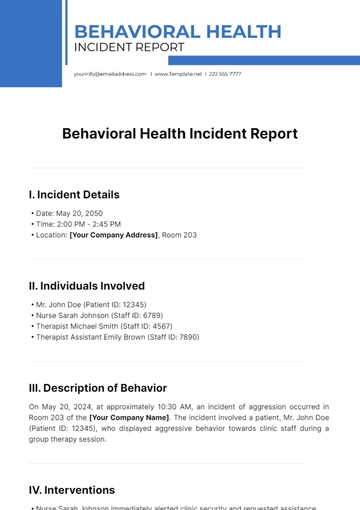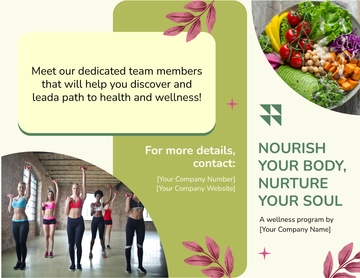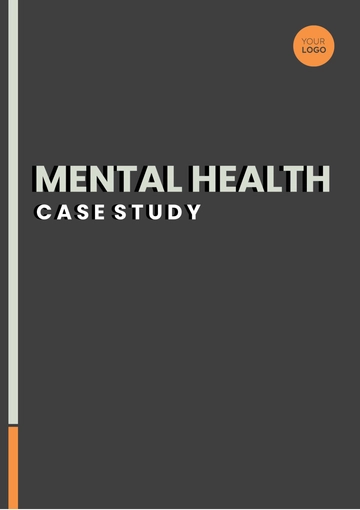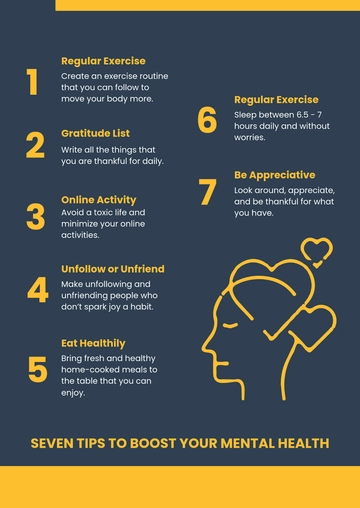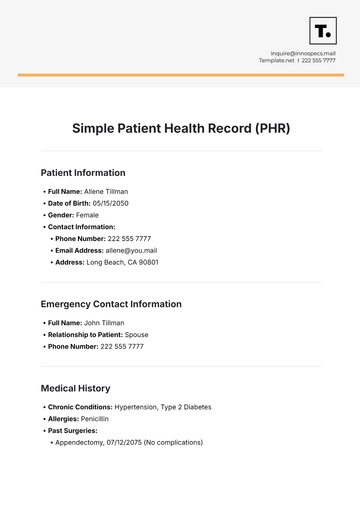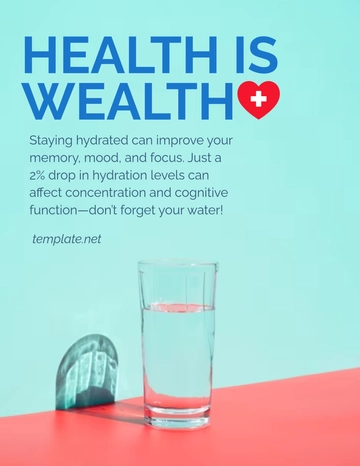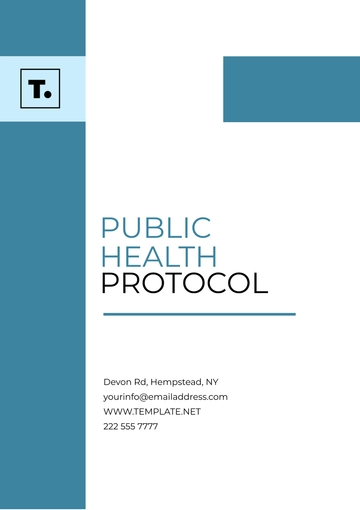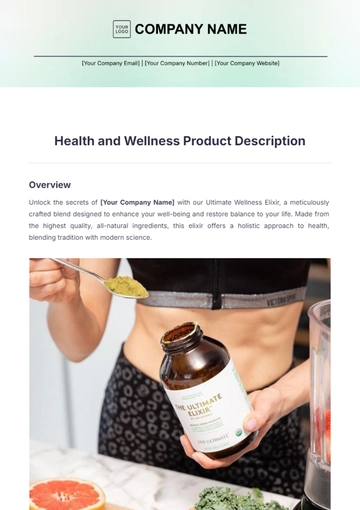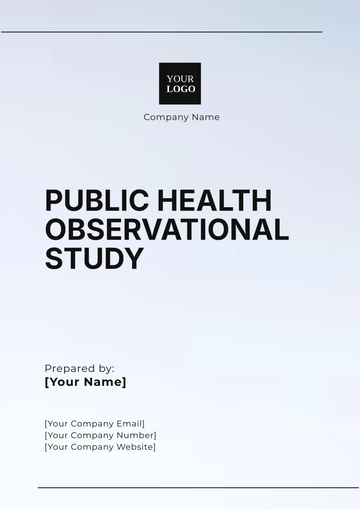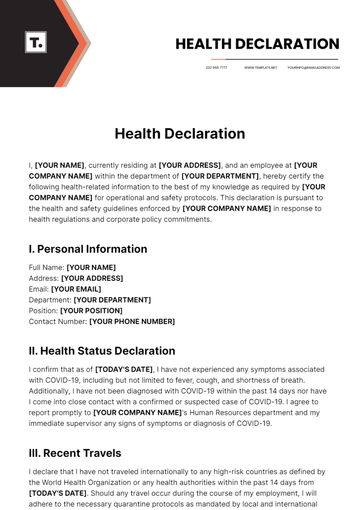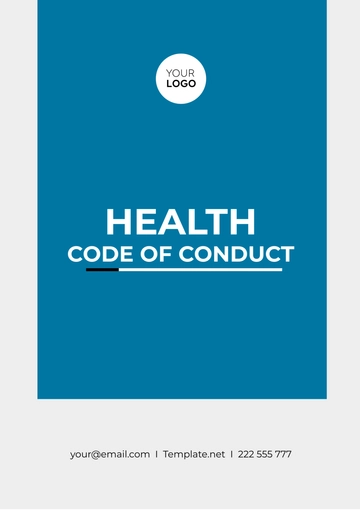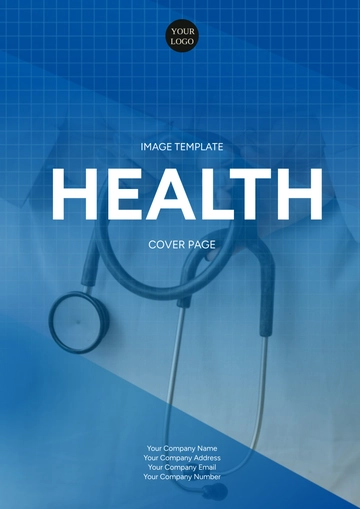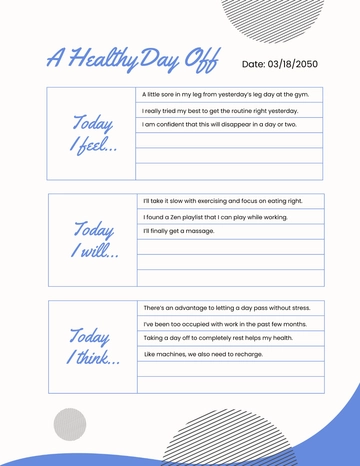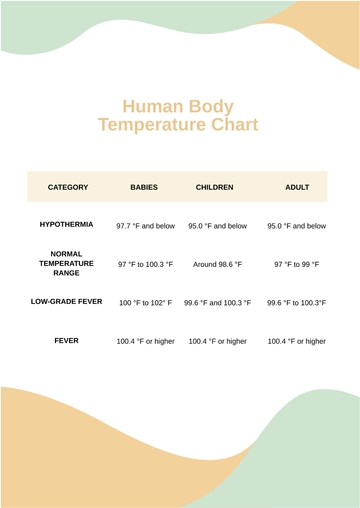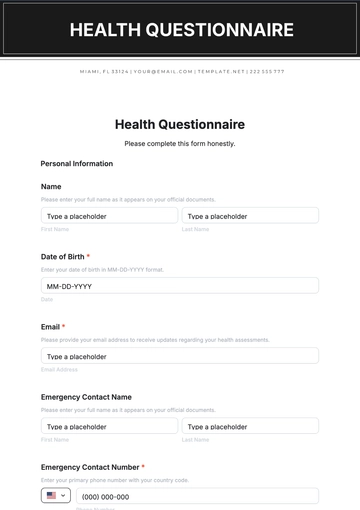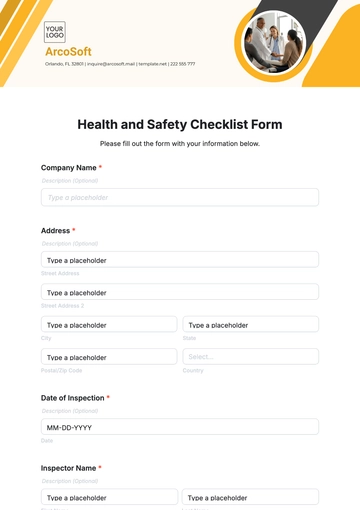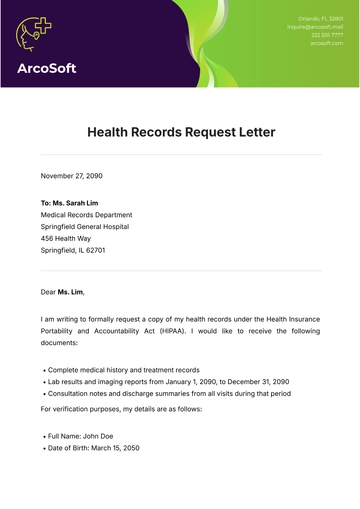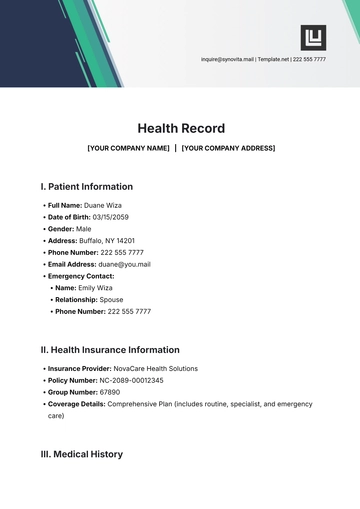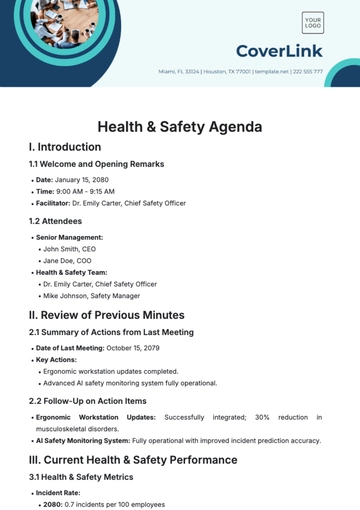Free Health & Safety Communication Management Journal

Introduction
This Health & Safety Communication Management Journal serves as a guide and reference point for our company's commitment to creating and maintaining a safe and healthy workplace. It is designed to provide clear, actionable information on our health and safety practices, policies, and procedures. This journal aims to enhance understanding, promote compliance, and foster a culture of safety among all employees.
Scope and Audience
The scope of this journal encompasses a wide range of topics, from policy overviews and risk management to employee well-being and innovative safety practices. It is intended for a broad audience within our organization, including new hires, seasoned employees, management teams, and health & safety personnel. By addressing the needs and concerns of this diverse group, the journal aims to unify and engage everyone in our collective safety mission.
Health & Safety Policies and Regulations
Our health and safety framework is built on three fundamental policies: Workplace Safety Policy, Environmental Health Policy, and Employee Wellness Policy, each addressing specific aspects of health and safety.
Workplace Safety Policy: Outlines standard procedures and safety measures to prevent workplace accidents and injuries, including guidelines on equipment use, safety protocols, and emergency response.
Environmental Health Policy: Focuses on ensuring a healthy work environment, covering air quality management, waste disposal, and hazardous materials handling.
Employee Wellness Policy: Addresses broader aspects of employee health, including mental health, ergonomic practices, and health screenings.
Compliance with Regulations
Our policies align with the following key regulations:
Regulation Name | Description | Compliance Aspect |
Occupational Safety and Health Act (OSHA) | Safe working conditions | Workplace Safety Policy |
Environmental Protection Act (EPA) | Environmental health standards | Environmental Health Policy |
Mental Health Parity Act | Parity in healthcare benefits for mental health | Employee Wellness Policy |
Risk Assessment and Management
Identifying Potential Hazards
Risk assessment involves identifying and evaluating potential hazards, categorized as:
Hazard Type | Examples |
Environmental | Chemical spills, poor air quality |
Ergonomic | Improper workstation setup, repetitive strain injuries |
Operational | Equipment malfunction, inadequate training |
Risk Management Strategies
Our risk management employs a multi-tier strategy:
Elimination: This involves the removal of hazards entirely, where feasible. An example includes opting for safer chemical alternatives to mitigate risk at its source.
Substitution: In this tier, existing hazards are replaced with alternatives that present a lower risk. This strategy is vital in reducing overall exposure to harmful elements.
Engineering Controls: This tier focuses on the isolation of hazards. Techniques such as soundproofing are employed to minimize the impact of noise pollution, thereby reducing risk.
Administrative Controls and PPE: The final tier involves the implementation of safe work practices and the provision of personal protective equipment. These measures are essential in minimizing risks that cannot be eliminated, substituted, or engineered out.
Health & Safety Training
Our comprehensive training program is designed to educate employees on various health and safety aspects, ensuring a well-informed and prepared workforce. Key training modules include:
Basic Health & Safety Orientation: An introductory course for all new employees, covering fundamental safety procedures and company-specific safety protocols.
Advanced Safety Training: For employees in higher-risk roles, focusing on specialized safety equipment, emergency response, and hazard-specific precautions.
Health & Wellness Workshops: Regular workshops focusing on mental health, stress management, and ergonomic practices in the workplace.
Training Module | Description | Target Audience |
Basic Orientation | Fundamental safety procedures and protocols | All new employees |
Advanced Safety | Specialized safety and emergency procedures | High-risk roles |
Wellness Workshops | Mental health, stress management, ergonomics | All employees |
Importance of Continuous Learning
Continuous learning in health and safety is vital to adapt to new challenges and maintain a safe workplace. We encourage all employees to participate in ongoing training sessions and provide regular updates on safety protocols and best practices.
Emergency Response and Procedures
Emergency Response Plan
Our Emergency Response Plan is designed to ensure swift and effective action in various emergency scenarios. The plan includes:
Evacuation Procedures: Clear guidelines for safe and orderly evacuation in cases of fire, natural disasters, or other emergencies.
Emergency Contacts and Roles: A list of emergency contacts and designated roles for employees during different types of emergencies.
Emergency Type | Evacuation Route | Key Contacts |
Fire | Main and secondary exits | Fire department, Safety Officer |
Natural Disaster | Designated safe zones | Local authorities, Safety Team |
First Aid and Medical Assistance
Our emergency response framework places a significant emphasis on prompt and efficient medical assistance:
First Aid Kits: We have strategically positioned first aid kits throughout the workplace. These kits undergo regular inspections and are replenished to ensure readiness and effectiveness in case of an emergency.
Trained First-Aiders: We maintain a roster of employees who have received specialized training in basic first aid techniques. This team is available around the clock, across all operational shifts, ensuring immediate and competent medical response whenever required.
Location | First Aid Kit | Trained First-Aider |
Office Area | Yes | [John Doe] |
Manufacturing Floor | Yes | [Jane Smith] |
Health & Safety Communication Strategies
Internal Communication Channels
Effective communication is pivotal in maintaining a safe and healthy work environment. Our internal communication channels include:
Communication Channel | Purpose | Frequency |
Email Alerts | Critical updates and alerts | [As needed] |
Monthly Newsletters | Safety tips and news | [Monthly] |
Safety Meetings | Discuss safety performance | [Quarterly] |
Engagement and Feedback
We encourage active employee engagement in health and safety matters through:
Safety Surveys: Bi-annual surveys to gather employee feedback on safety practices and concerns.
Suggestion Box: An anonymous platform for employees to contribute ideas for improving safety.
Engagement Method | Description | Frequency |
Safety Surveys | Feedback on safety practices | Bi-annual |
Suggestion Box | Anonymous safety suggestions | Continuous |
Health & Well-being Programs
Employee Well-being Initiatives
Our well-being initiatives are designed to support the holistic health of our employees:
Program | Description | Availability |
Fitness Programs | Gym memberships, yoga classes | All employees |
Mental Health Support | Counseling, stress management | All employees |
Work-Life Balance
Promoting work-life balance is a key focus of our well-being strategy:
Initiative | Description | Eligibility |
Flexible Hours | Adjustable start and end times | All employees |
Remote Work | Partial or full remote work options | Eligible employees |
Monitoring and Reporting
Health & Safety Monitoring
Regular monitoring of health and safety practices is essential to ensure compliance and identify areas for improvement. Our monitoring process includes:
Monitoring Activity | Description | Frequency |
Safety Audits | Assessment of compliance and risks | Bi-annual |
KPI Tracking | Tracking safety performance indicators | Quarterly |
Incident Reporting and Analysis
A robust incident reporting system is vital for improving safety measures:
Incident Reporting Protocol: Clear guidelines for reporting any safety incidents or near-misses.
Analysis and Response: Analyzing reported incidents to implement corrective actions and prevent recurrence.
Incident Type | Reporting Procedure | Follow-up Action |
Workplace Injury | Immediate report to supervisor | Investigation and corrective measures |
Equipment Malfunction | Report through safety portal | Review and maintenance |
Continuous Improvement and Innovation
Review and Improvement Process
Our commitment to safety includes continuous review and improvement of our practices:
Review Activity | Description | Frequency |
Annual Safety Review | Overall review of safety practices | Annual |
Feedback Integration | Implementing employee suggestions | Ongoing |
Innovation in Health & Safety
Innovation is key to advancing our health and safety standards:
Technology Integration: We are at the forefront of incorporating advanced technologies to bolster safety measures. This includes the utilization of wearable devices capable of monitoring various environmental hazards, thereby providing real-time data for enhanced safety management.
Best Practices Research: We actively engage in ongoing research to identify and integrate industry-leading best practices in health and safety. This approach ensures that our strategies are not only current but also effectively aligned with the highest standards in the field.
Innovation Area | Description | Status |
Wearable Safety Tech | Use of technology for hazard monitoring | In pilot phase |
Best Practices Adoption | Implementing industry best practices | Ongoing |
Conclusion
Our commitment to health and safety is unwavering. We understand that a safe and healthy work environment is not only a regulatory requirement but also a cornerstone of our corporate culture and employee well-being. This journal is a testament to our dedication to continuous improvement in every aspect of health and safety. Looking forward, we remain committed to adapting and evolving our health and safety practices. This includes staying abreast of emerging risks, technological advancements, and changes in regulations. We will continue to update this journal to reflect these developments, ensuring that our strategies are effective and our workforce is informed and protected.
- 100% Customizable, free editor
- Access 1 Million+ Templates, photo’s & graphics
- Download or share as a template
- Click and replace photos, graphics, text, backgrounds
- Resize, crop, AI write & more
- Access advanced editor
Introducing Template.net's Health & Safety Communication Management Journal Template. This editable and customizable journal provides a structured framework for recording and managing health and safety communication efforts. Utilize our Ai Editor Tool to tailor the journal to your organization's specific needs and enhance workplace safety effectively.
